Creating a pet-safe balcony garden requires planning, preparation, and proper plant selection to guarantee your furry companions stay healthy and happy. You’ll need to take into account factors like toxic plant avoidance, secure container placement, and appropriate growing conditions for each species. While many common balcony plants can harm pets through ingestion or contact, the following ten options offer both beauty and safety for your outdoor space. Let’s explore how to transform your balcony into a verdant retreat where both you and your pets can thrive.
Contents
- 1 Essential Safety Tips Before Starting Your Pet-Friendly Garden
- 2 Spider Plant: The Perfect Hanging Companion
- 3 Boston Fern: A Classic Choice for Shaded Corners
- 4 Pet-Safe Herbs: Basil, Sage, and More
- 5 African Violet: Adding Color Without Worry
- 6 Bamboo Palm: Natural Privacy Screen
- 7 Calathea: Beautiful Motion and Safe Fun
- 8 Create Vertical Gardens With Air Plants
- 9 Pet Grass: Growing Your Own Healthy Snacks
- 10 Container Arrangement Tips for Maximum Safety
Essential Safety Tips Before Starting Your Pet-Friendly Garden
Before creating a pet-friendly balcony garden, it’s essential to implement proper safety measures to protect your furry companions. This includes thoroughly researching each plant species to confirm they are non-toxic, securing containers to prevent tipping, ensuring adequate drainage to avoid standing water that can harbor harmful bacteria, and creating barriers to prevent pets from digging in or consuming soil. Additionally, regular monitoring of plant health and immediate removal of any fallen leaves, berries, or debris will help maintain a safe environment for curious pets.
- Remove all existing toxic plants from the balcony area
- Choose sturdy, heavy containers that won’t tip over
- Install secure fencing or netting if needed to separate pets from plants
- Use well-draining potting soil specifically formulated for container gardens
- Place containers away from balcony edges
- Create physical barriers between plants and pets using decorative stones or plant guards
- Maintain regular cleaning schedule to remove fallen plant material
- Check local regulations regarding balcony weight restrictions for container gardens
- Keep gardening tools and supplies stored safely away from pets
- Consider raised planters to minimize pet access to soil
Spider Plant: The Perfect Hanging Companion
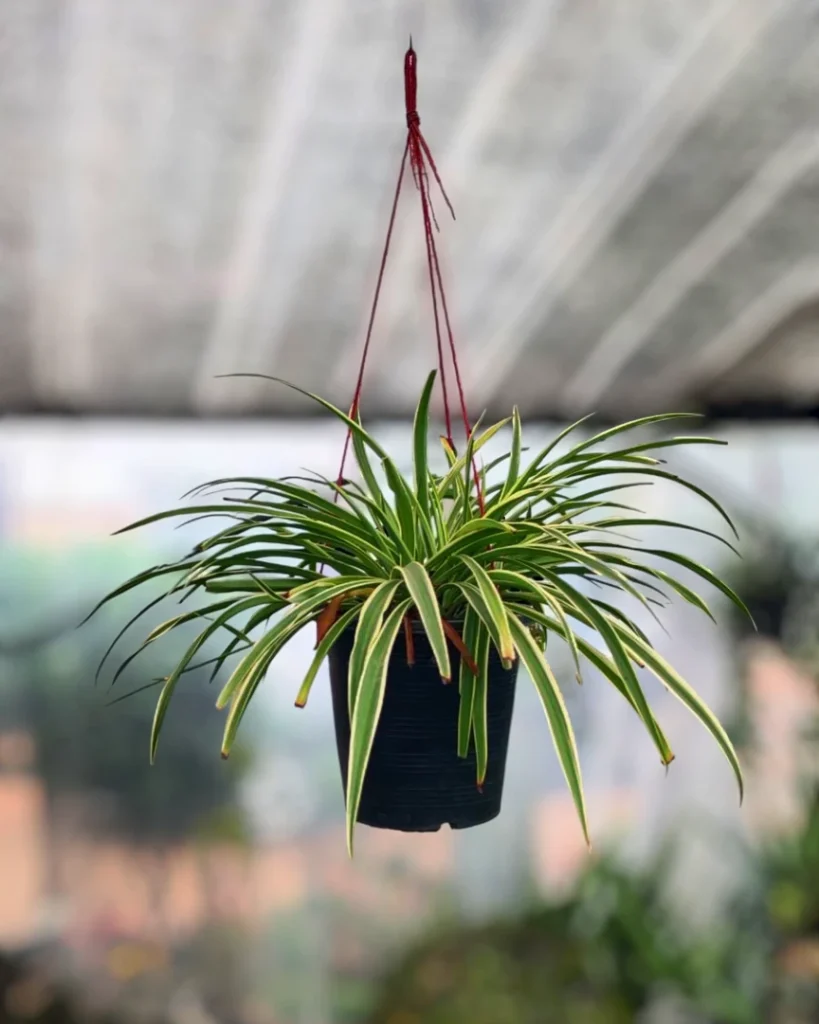
Spider Plants (Chlorophytum comosum) are excellent pet-safe choices for balcony hanging baskets, featuring graceful arching leaves with distinctive white stripes and long stems that produce baby plantlets. These hardy plants not only add visual interest with their cascading growth but also help purify the air, making them perfect companions for both pets and plant enthusiasts in limited outdoor spaces.
- Light: Bright indirect sunlight; can tolerate partial shade but avoid direct sun which may scorch leaves
- Water: Keep soil moderately moist; water when top inch of soil feels dry
- Soil: Well-draining potting mix with good organic content
- Temperature: 60-75°F (15-24°C)
- Humidity: Adaptable to various humidity levels
- Container: Hanging basket or elevated pot with drainage holes
- Fertilizer: Light feeding with balanced fertilizer every 2-3 months during growing season
- Propagation: Easy to propagate from plantlets that form on stems
Boston Fern: A Classic Choice for Shaded Corners
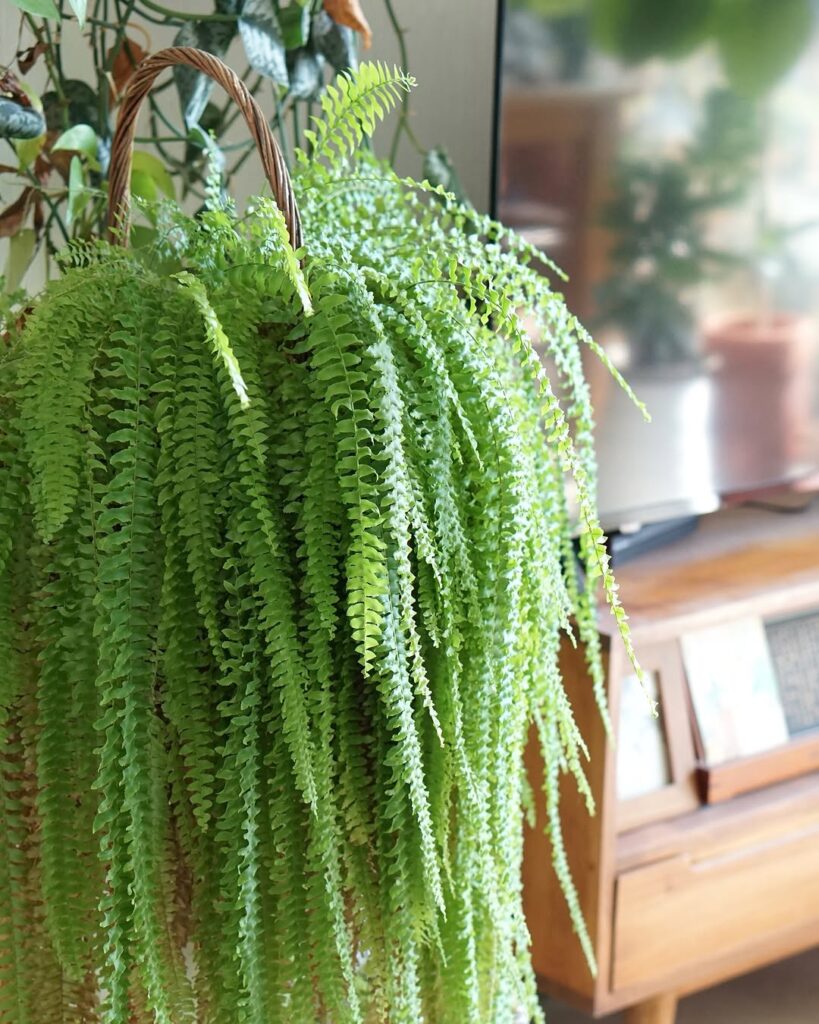
Boston Ferns are elegant, pet-friendly plants known for their graceful, arching fronds and lush green foliage. These classic hanging or pedestal plants provide excellent visual interest for shaded balcony spaces while being completely non-toxic to cats and dogs. Their feathery leaves create a soft, cascading effect that can help transform a bare corner into a verdant oasis, and they’re particularly effective at adding humidity to their surrounding area.
- Light: Thrives in indirect light or partial shade; avoid direct sunlight which can scorch leaves
- Water: Keep soil consistently moist but not waterlogged; mist regularly to maintain humidity
- Soil: Well-draining, rich potting mix with high organic content
- Temperature: Prefers 60-75°F (15-24°C)
- Humidity: Requires high humidity levels; minimum 50%
- Fertilizer: Feed monthly during growing season with balanced liquid fertilizer
- Container: Use pots with drainage holes; plastic or glazed ceramic preferred to maintain moisture
Pet-Safe Herbs: Basil, Sage, and More
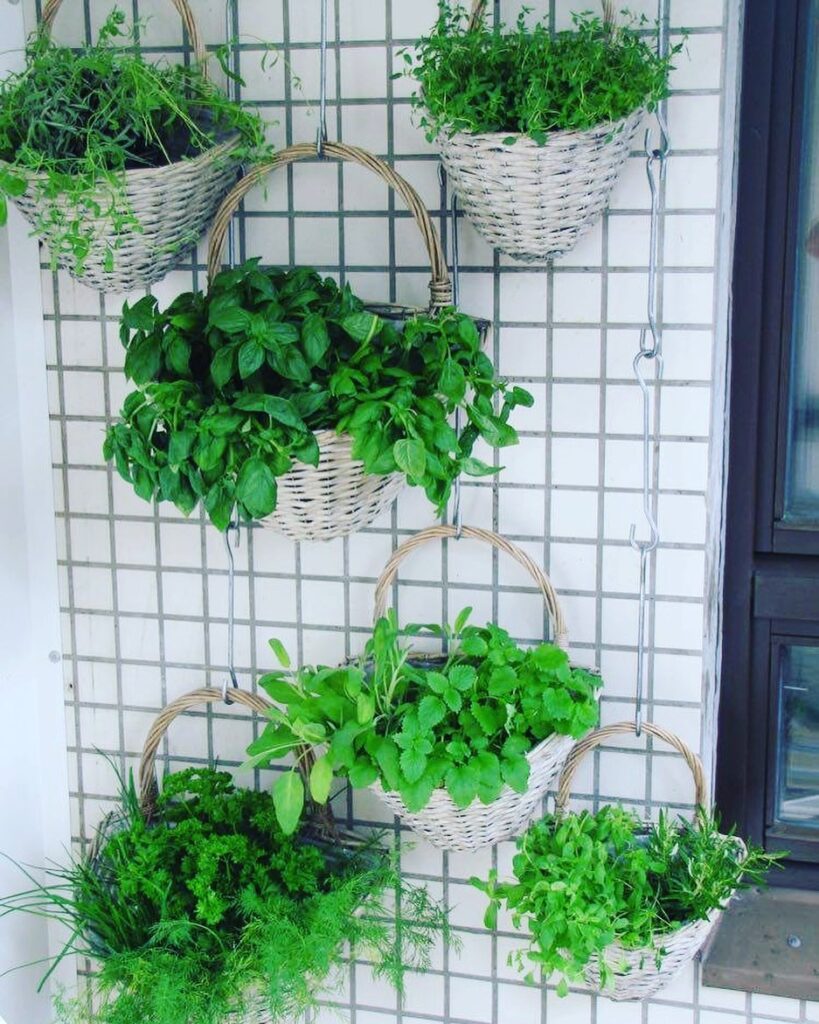
Many common culinary herbs are safe for pets and perfect for balcony gardens, making them both practical and pet-friendly choices. Basil, sage, thyme, and rosemary are not only non-toxic to cats and dogs but also offer fresh flavors for cooking while creating an aromatic environment. These herbs can be grown together in containers, requiring similar care conditions and providing year-round greenery when properly maintained.
- Light: Full sun, minimum 6 hours daily; morning sun preferred
- Water: Moderate watering; soil should dry slightly between waterings
- Soil: Well-draining potting mix with added perlite
- Temperature: 65-70°F (18-21°C)
- Container: Terracotta or plastic pots with drainage holes
- Spacing: 6-12 inches between plants
- Fertilizer: Light feeding with balanced organic fertilizer monthly
- Pruning: Regular harvesting to encourage bushy growth
- Winter Care: Move containers indoors when temperatures drop below 40°F (4°C)
African Violet: Adding Color Without Worry
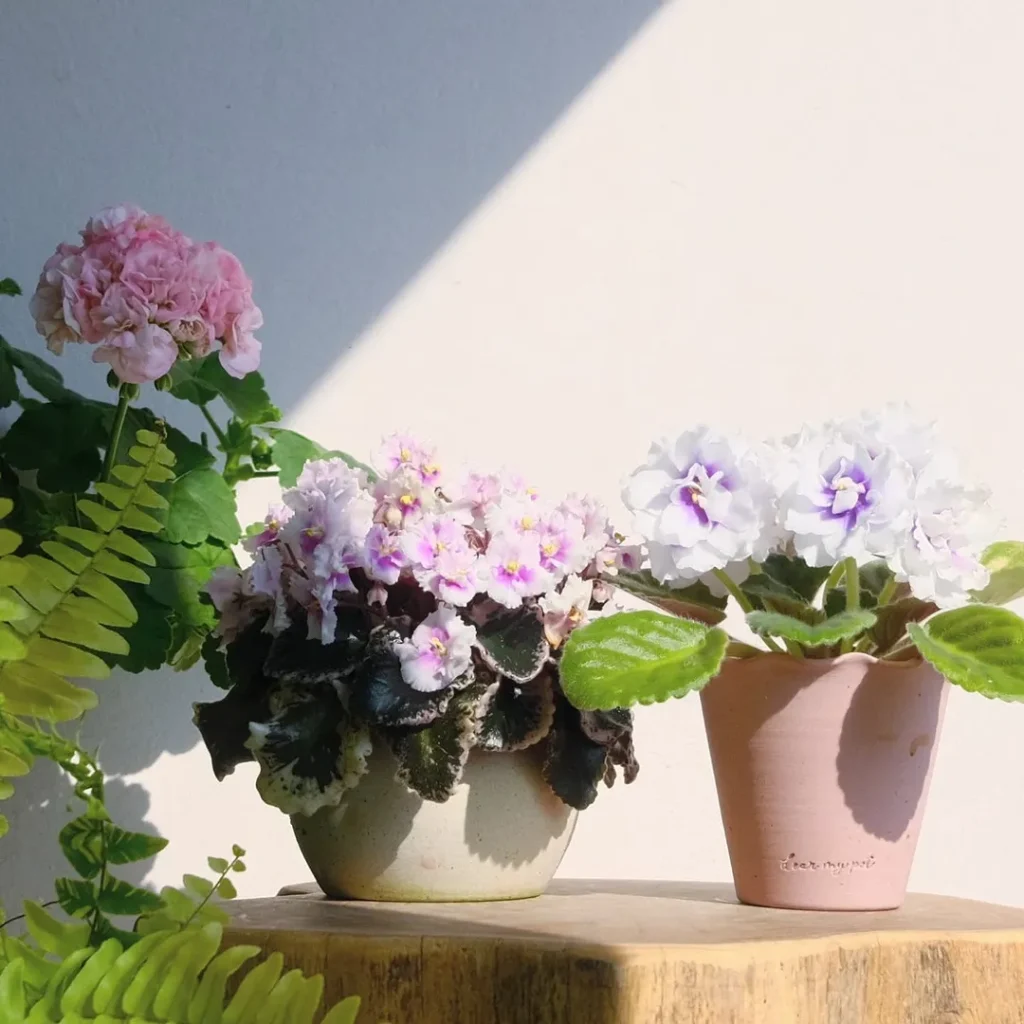
African Violets are compact, non-toxic flowering plants that make excellent pet-safe additions to balcony spaces. These charming plants produce clusters of purple, pink, white, or blue blooms throughout the year, rarely growing larger than 6 inches in height and diameter. Their small size and continuous flowering habit make them ideal for brightening up balcony corners or tabletops, while their complete safety for cats and dogs provides peace of mind for pet owners.
- Light: Bright, indirect light; avoid direct sunlight; morning sun is acceptable
- Water: Keep soil consistently moist but not waterlogged; water from bottom to avoid leaf damage
- Soil: Well-draining, loose African violet potting mix
- Temperature: 65-75°F (18-24°C); protect from cold drafts
- Humidity: 40-60%; use humidity trays if needed
- Fertilizer: Feed monthly with balanced, water-soluble fertilizer designed for African violets
- Container: Small pots with drainage holes; repot when rootbound
- Maintenance: Remove dead flowers and leaves; avoid getting water on leaves
Bamboo Palm: Natural Privacy Screen
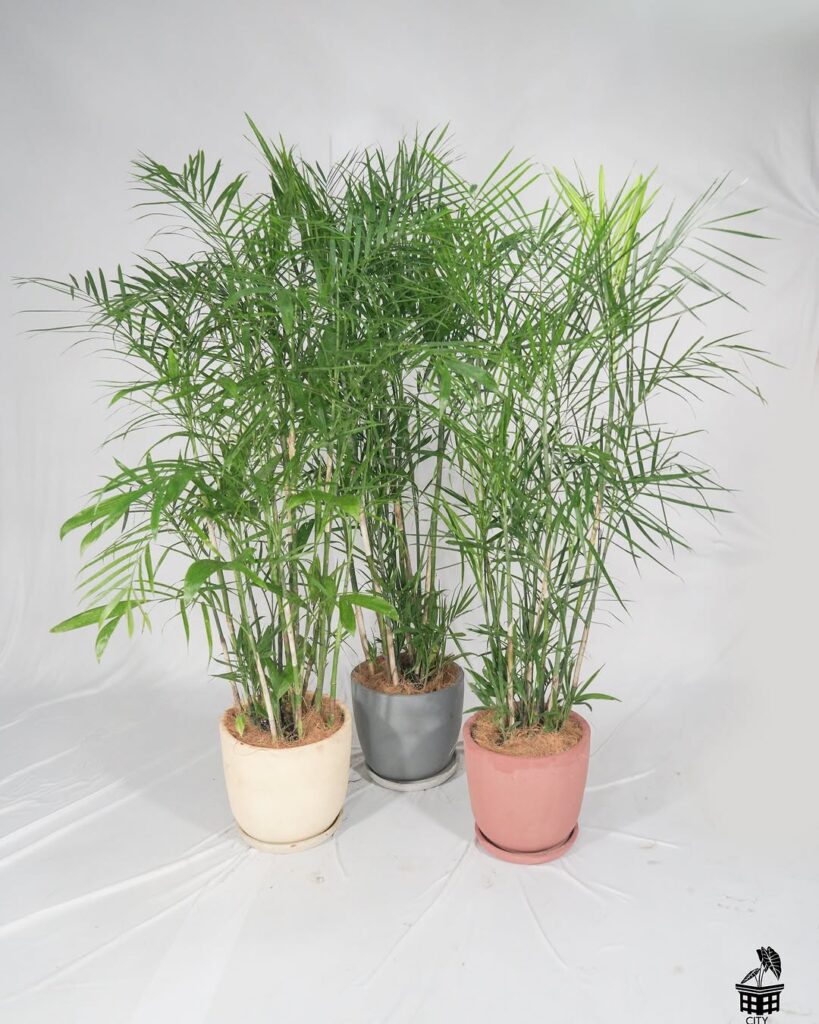
The bamboo palm (Chamaedorea seifrizii) creates an elegant natural privacy screen for balconies while remaining safe for pets. Growing up to 8 feet tall in containers, this graceful palm features multiple reed-like stems topped with feathery fronds that gently filter light and block unwanted views. Its compact growth habit makes it ideal for balcony corners, and its non-toxic nature means pet owners can rest easy if their cats or dogs investigate the plant.
- Light: Thrives in bright, indirect light; can tolerate partial shade but avoid direct sunlight
- Water: Keep soil consistently moist but not waterlogged; water when top inch of soil feels dry
- Soil: Well-draining, rich potting mix with added organic matter
- Temperature: Prefers 65-80°F (18-27°C); protect from cold drafts
- Humidity: Appreciates moderate to high humidity; mist regularly in dry conditions
- Fertilizer: Feed monthly during growing season with balanced liquid fertilizer
- Container: Use pot with drainage holes; repot every 2-3 years
Calathea: Beautiful Motion and Safe Fun
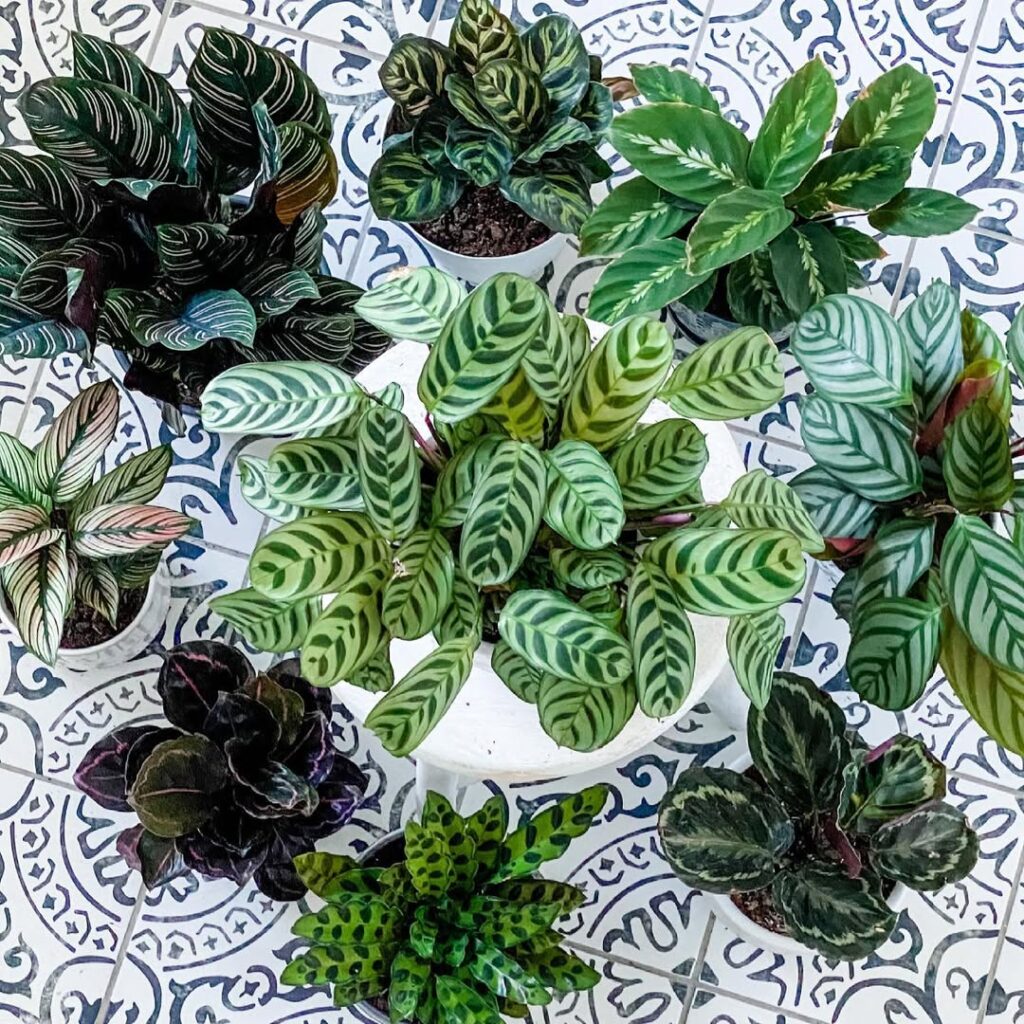
Calathea, known for its stunning foliage and daily leaf movements, is completely safe for pets while adding dynamic beauty to any balcony space. These tropical plants feature distinctive patterns on their leaves, which move up and down throughout the day in response to light – a process called nyctinasty. The leaves fold up at night and unfold in the morning, creating a natural display that can fascinate both pets and their owners while posing no toxic risk if nibbled.
- Light: Bright indirect light; avoid direct sunlight which can fade leaf patterns and burn foliage
- Water: Keep soil consistently moist but not waterlogged; water when top inch of soil feels dry
- Humidity: Requires high humidity (60% or higher); mist regularly or use a humidity tray
- Soil: Well-draining, rich potting mix with organic matter
- Temperature: Warm conditions between 65-80°F (18-27°C)
- Fertilizer: Feed monthly during growing season with balanced, water-soluble fertilizer
- Container: Use pots with drainage holes to prevent root rot
- Protection: Place in sheltered area of balcony to protect from strong winds
Create Vertical Gardens With Air Plants
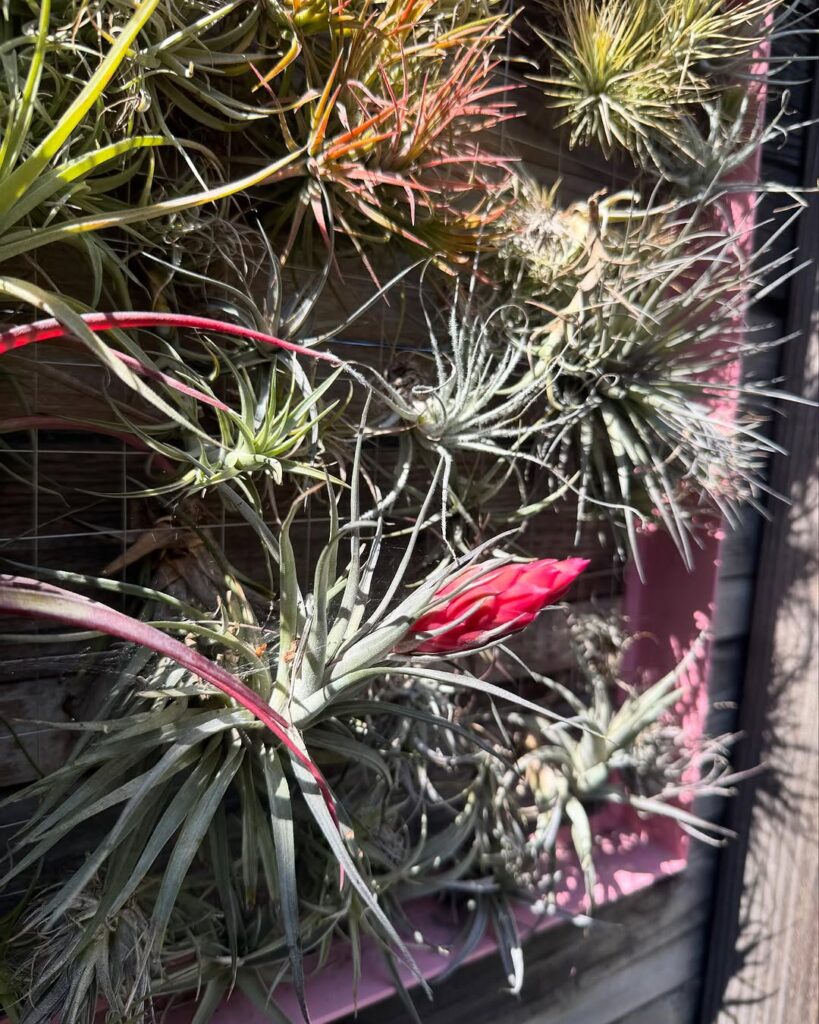
Creating vertical gardens with air plants (Tillandsia) is an excellent pet-safe option for balconies since these plants don’t require soil and can be mounted on walls or displayed in hanging containers. Air plants naturally grow on other plants or surfaces in their native habitat, making them perfect for creative vertical arrangements that maximize limited balcony space while keeping toxic soil components away from curious pets.
- Light: Bright, indirect sunlight; avoid direct afternoon sun which can burn leaves; morning sun is usually fine
- Water: Mist 2-3 times per week in warm weather, once weekly in cool weather; soak in water for 20-30 minutes every 1-2 weeks
- Temperature: Prefer 50-90°F (10-32°C); protect from frost
- Humidity: Moderate to high humidity; benefit from regular misting
- Mounting: Attach to cork, driftwood, or wire displays using non-toxic glue or wire
- Fertilizer: Monthly feeding with air plant-specific fertilizer during growing season
- Air Flow: Good circulation needed to prevent rot; avoid stagnant air
Pet Grass: Growing Your Own Healthy Snacks
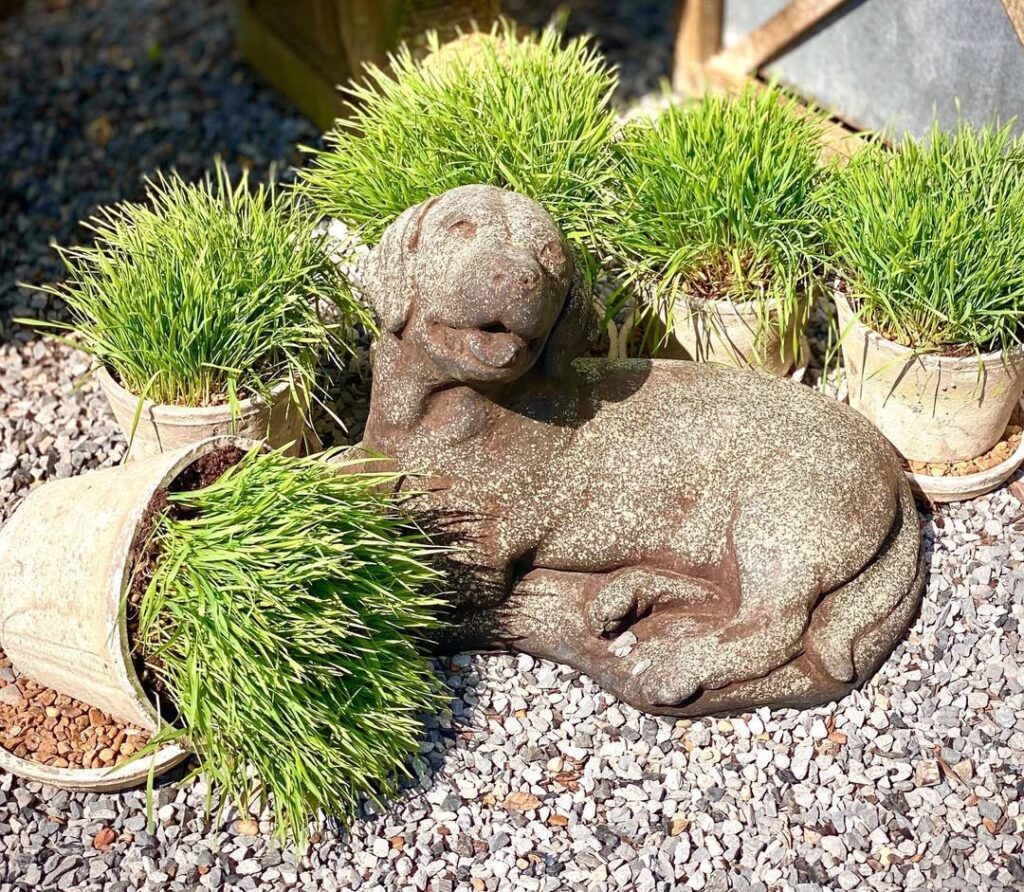
Growing your own pet grass, such as cat grass or wheat grass, provides a safe and nutritious snacking option for pets while adding greenery to your balcony space. Pet grass is easy to maintain, grows quickly, and helps satisfy your pet’s natural grazing instincts while potentially reducing their interest in nibbling on other houseplants. It can also aid in digestion and help cats eliminate hairballs naturally.
- Light: Bright, indirect sunlight; can tolerate partial shade but grows best with 4-6 hours of daily sun
- Water: Keep soil consistently moist but not waterlogged; water when top inch of soil feels dry
- Soil: Well-draining potting mix with good moisture retention
- Temperature: 60-75°F (15-24°C)
- Container: Shallow containers with drainage holes
- Growth Cycle: Harvest when grass reaches 4-6 inches; replant every 2-3 weeks for continuous supply
- Spacing: Seeds can be planted densely, about 1/4 inch apart
- Depth: Plant seeds 1/4 to 1/2 inch deep in soil
Container Arrangement Tips for Maximum Safety
Container arrangement on a pet-safe balcony requires strategic placement to prevent accidents and guarantee plant stability. Heavy containers should be positioned against walls or corners to minimize tipping risks, while lighter pots need secure anchoring. Create clear pathways between containers to prevent pets from knocking them over during play, and avoid placing climbing plants or vines where they might tempt pets to jump or climb. Consider using deeper containers with wider bases for better stability and drainage.
- Light: Arrange taller plants toward the back (north side) of the balcony to prevent shadowing smaller plants; guarantee all containers receive appropriate light based on plant requirements
- Water: Group plants with similar watering needs together; use self-watering containers or moisture-monitoring systems to maintain consistent moisture levels
- Soil: Use high-quality potting mix with good drainage; add weight to containers with gravel at bottom for stability
- Spacing: Allow 2-3 inches between containers for air circulation; guarantee containers are at least 1 inch off the ground for drainage
- Support: Install sturdy trellises and supports directly into containers, securing them to balcony railings when necessary
